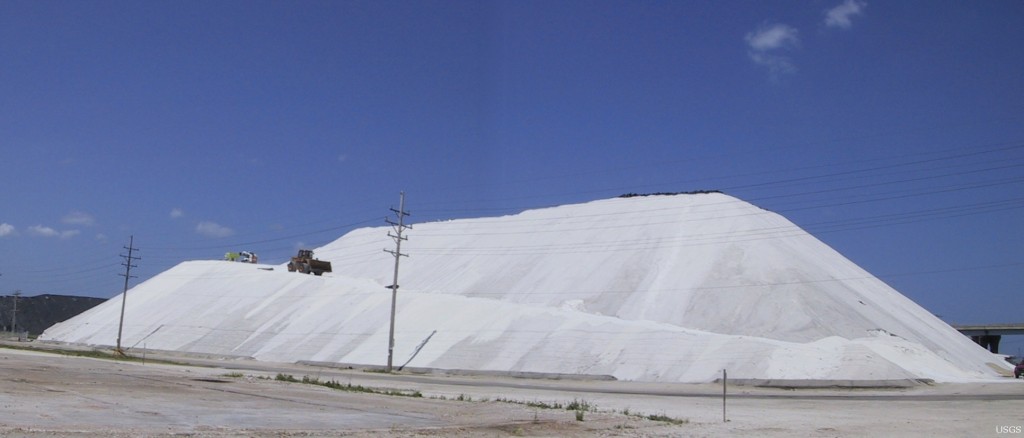It’s wintertime! Along with the cold, snow, and ice comes another element, less recognized as a pollutant, but becoming an increasing threat to water quality – salt. Every year salt is dumped in mass on roads and other paved surfaces to help de-ice and improve safety. Once applied to the ground it is then either caught in the snowmelt when temperatures return back above freezing, or it is brushed into the environment by the cars driving over it. Don’t be discouraged – there are several things we can do to reduce salt pollution and still keep our surroundings safe!
- Shovel early and as much as possible to minimize the need for deicers
- Consider using a salt brine (23.3% salt and water mixture) to minimize the amount of chlorides released. You can make your own by mixing 13 pounds of salt in 5 gallons of water. Mix until all the salt is dissolved. Add to a masonry sprayer (available at Lowes or Home Depot) and apply the liquid 1-2 hours before a storm. Be careful not to over apply and create a slippery condition!
- Sweep up any excess salt and reuse or dispose of it in the trash.
- Temperature matters. Below 15 degrees F salt is ineffective so try using an alternative to salt, like pine needles or sand for added traction on walkways.
- Refrain from using kitty litter, ashes, fertilizer or any product containing urea to deice. This adds both salts as well as other pollutants to the waterway.
Why is salt considered a pollutant?
Road salt, most commonly comprised of chloride and sodium (or chloride and another substance), dissolves readily in fresh water releasing chlorides into the environment. Chlorides are a growing concern to water scientists because they don’t break down, and once they’re in a water body there are no biological processes to remove them. Natural Chloride concentrations in fresh water are between 1 and 100 ppm (parts per million), that’s at or less than 0.01%. Chlorides can be toxic to aquatic plants and animals when levels go above these natural background concentrations, and they can also remain in the soil where they accumulate and become toxic to terrestrial plants and animals.
Chlorides interfere with an organism’s ability to regulate levels of salt and other substances within their bodily fluids. The effects vary by species type and location, but animals such as frogs and amphibians who lay eggs in “vernal pools,” or isolated bodies of water, may be especially at risk, as those water sources have no way of flushing out excess chlorides. Additionally, salt concentrations tend to spike in early spring (with the thawing of ground and snowmelt) and summer (when evaporation exceeds precipitation thereby concentrating salt), two critical times of year for amphibian reproduction and development.
How are public safety and water quality being addressed?
Salt pollution is challenging to address. Public safety and safe road conditions are paramount concerns, but protecting water quality needs to be considered as well. There are steps that can help address environmental concerns while still allowing safe road conditions and many groups are working to implement them. For example, the City of Newark, as well as most of our local municipalities, keep salt supplies covered and out of the elements to protect it directly from weather which would otherwise carry these chemicals into nearby water bodies. Some municipalities, such as the City of Newark also adopt Snow and Ice Control Plans that base salt application on snowfall amount and temperature, as well as primary areas of safety concern.
The long-term effects of chloride are still under study; as is research to find the most environmentally sound way to ensure public safety. Until a better solution is discovered try using some of the tips listed earlier on your property to help lessen salts from entering our waterways!
Want to learn more about how we are making progress addressing public safety and water quality? Check out some of these resources:
Chloride and Our Water –Monitoring the Mix (video)
University of New Hampshire Road Salt Reduction
New Hampshire Department of Environmental Services Road Salt Reduction Initiative
Capitol Region Watershed District, MN – Snow Removal and Salting Tips
Star Tribune (MN) - Road salt use gets weighed against saving money, environment


